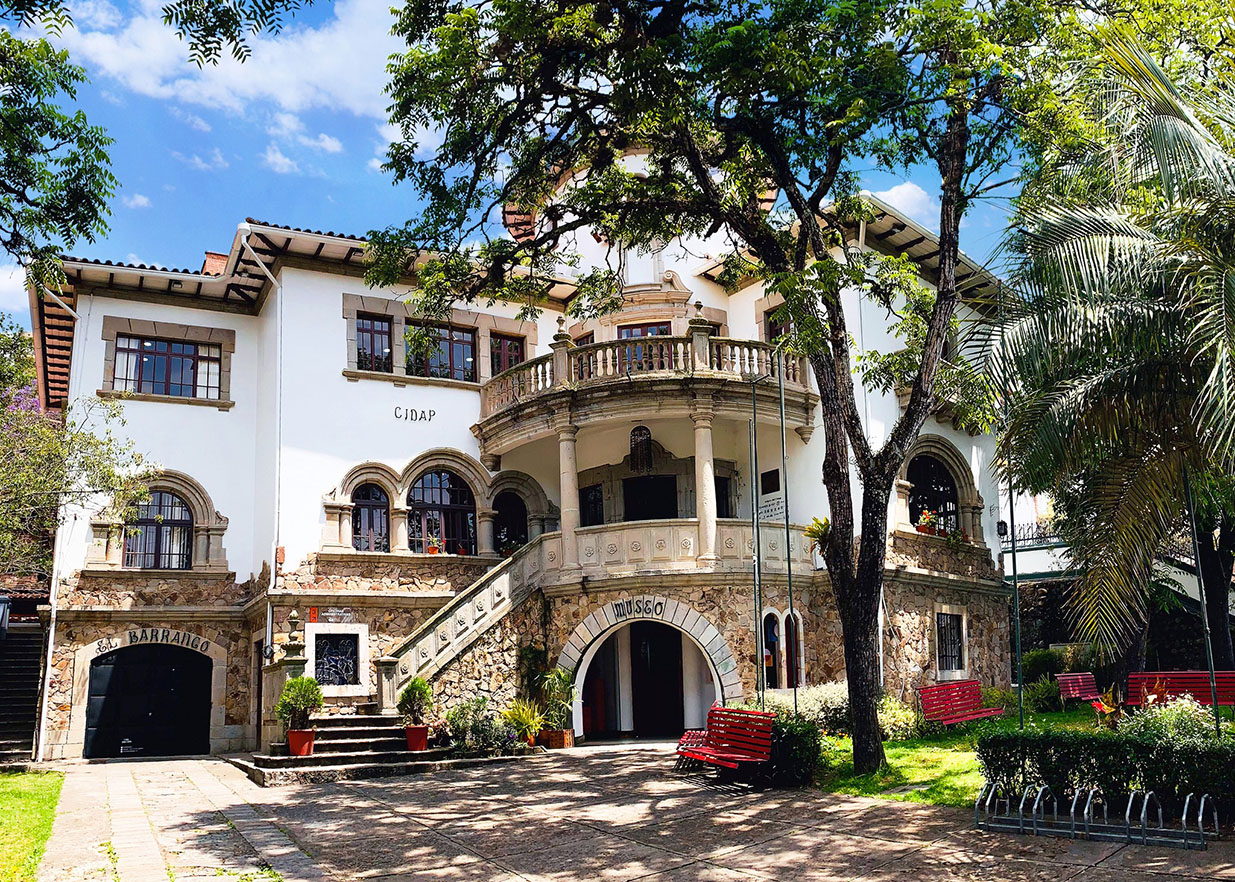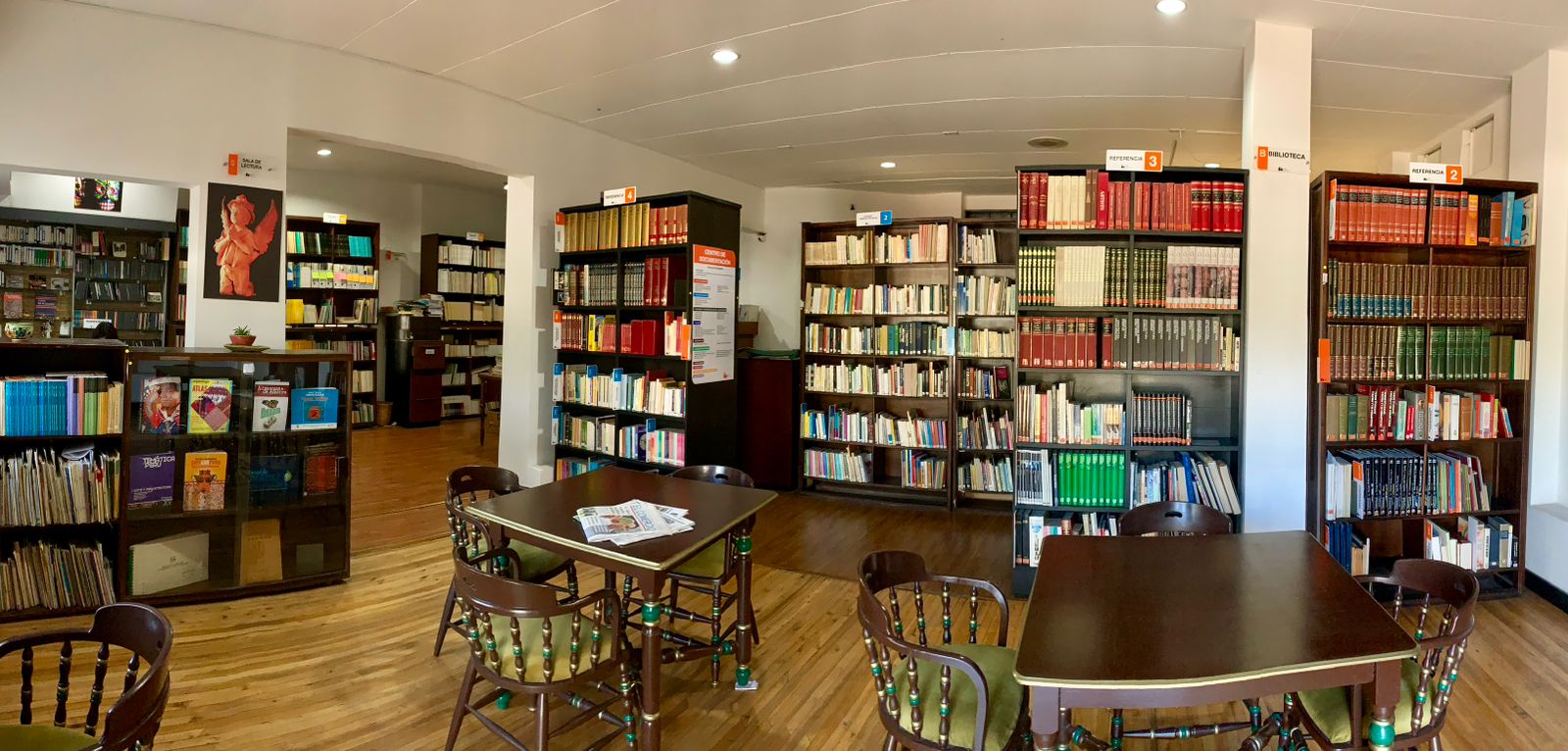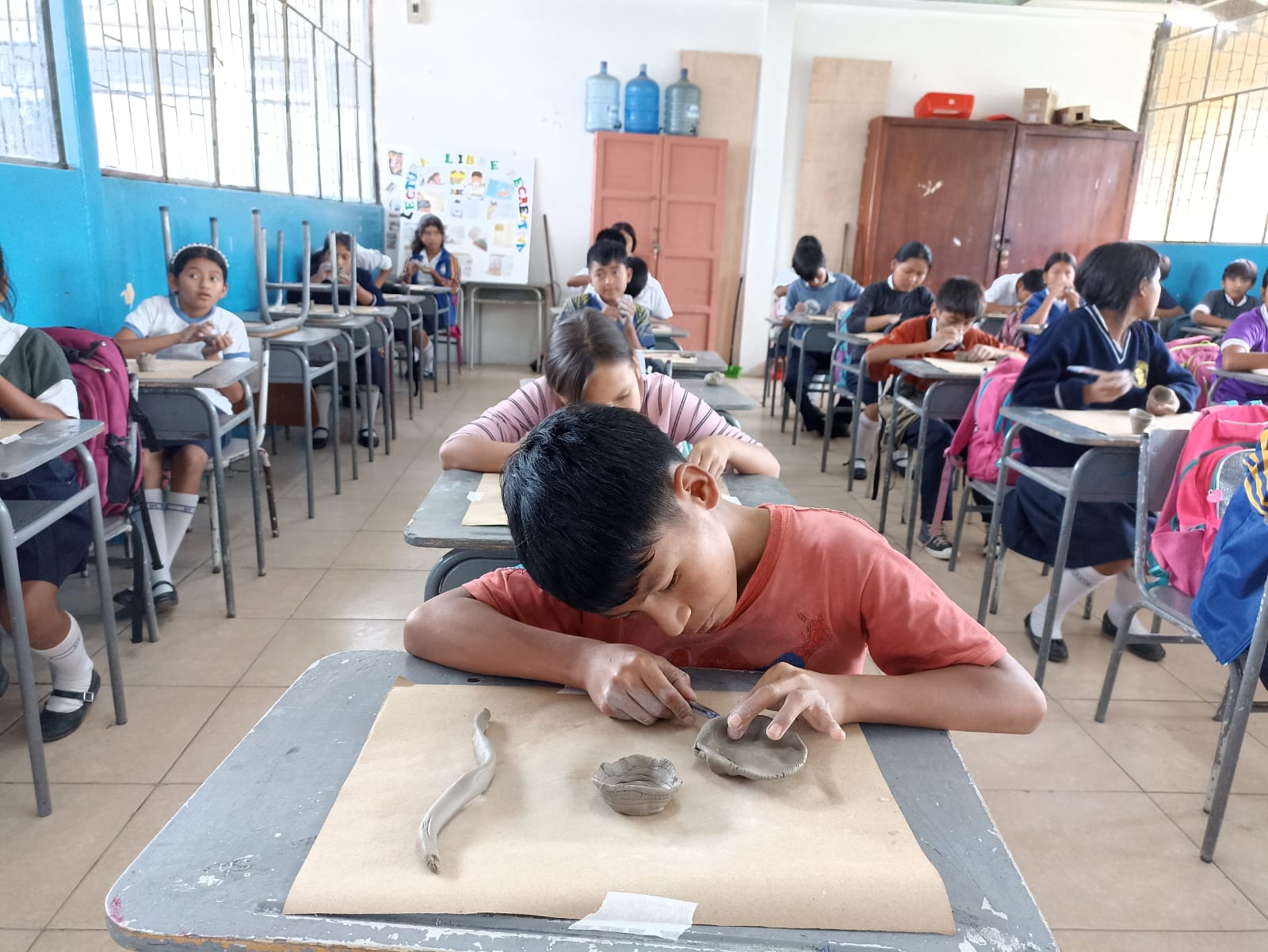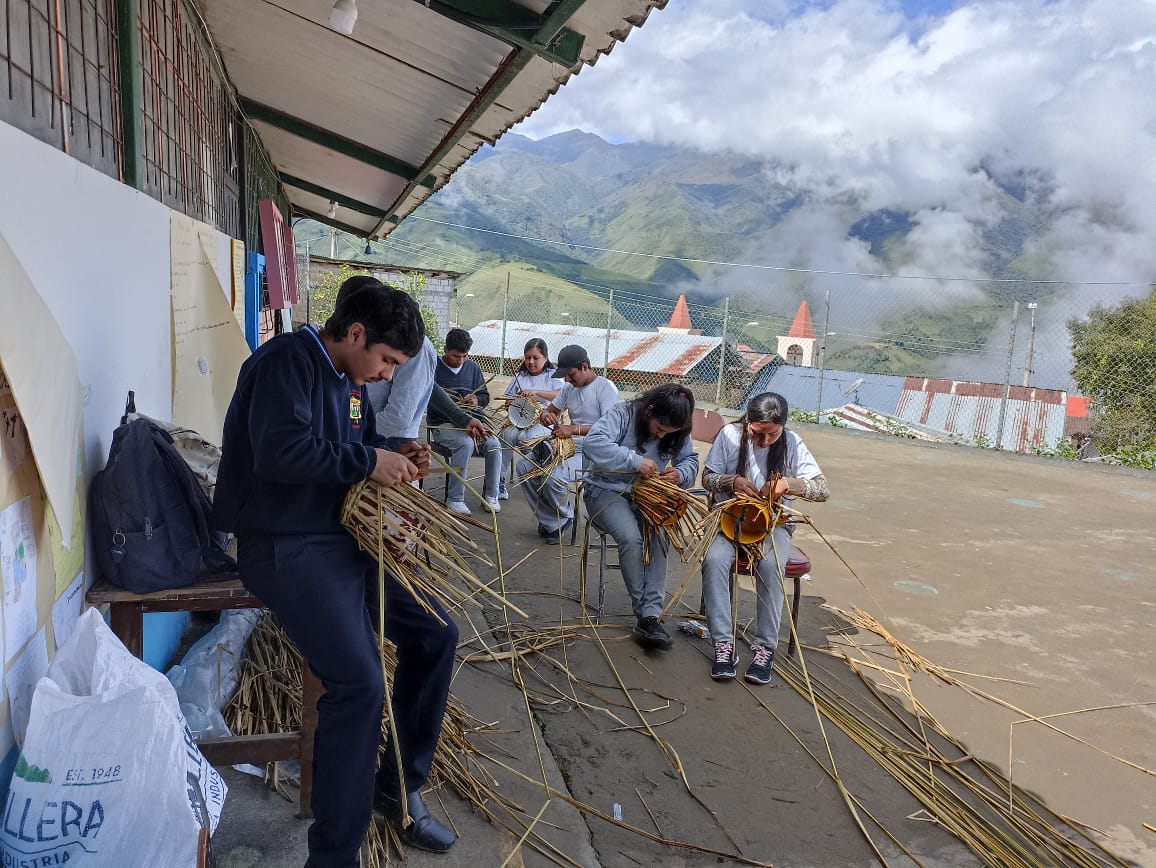The CIDAP Documentation Center. A little history
In Latin America, the study of popular culture and its living expressions began in the 1950s under the name of folklore, a discipline framed within Cultural Anthropology that collects and studies the traditional cultural manifestations of people. Scholars of the stature of Paulo de Carvalho Neto in Brazil and Ecuador, Augusto Raúl Cortazar, Clara Passafari and Lázaro Flury in Argentina, Isabel Aretz (Argentine living in Venezuela), Galo Ramírez Salcedo in Ecuador, Celso Lara Figueroa in Guatemala, among others; They propose investigative topics that cover various areas of folklore, including crafts, little or nothing known at the time.
In Ecuador, institutions emerge that deal with these issues through field research and ethnographic publications, such as the Ecuadorian Institute of Folklore, attached to the House of Ecuadorian Culture; However, there is an urgent need for a coordinating entity in the American region to gather and centralize the new information that was being produced in this regard, thus giving way to the creation of the Inter-American Center of Crafts and Popular Arts (CIDAP) in the city. from Cuenca.
The Inter-American Charter of Crafts and Popular Arts, which led to the creation of CIDAP in Ecuador in 1975, stipulates the formation of a documentary center that brings together and enriches the bibliography on the subject, which is why CIDAP Once established, it undertakes actions of great responsibility aimed at sedimenting the craft sector, one of its objectives being to organize a specialized Library and a Documentary Center of crafts and popular arts that gathers, preserves, classifies, distributes and meets the needs for the transfer of all knowledge. and artisanal technology [1], perspective with which the CIDAP Documentation Center with inter-American significance was established and currently operates.
The first bibliographic collections of the library and the Documentation Center, which for many years operated separately, came from donations, contributions from teachers and students participating in the inter-American seminars and courses held by CIDAP, as well as contributions from the OAS. and cultural entities from other countries. Gradually, a fairly extensive bibliographic and documentary fund has been formed, which encompasses a historical and conceptual vision of crafts, master craftsmen and the cultural heritage of all of America and some countries in Europe, Africa and Asia.
Despite having been in operation for 48 years, there are few people who have passed through here, dedicating many years of their lives to organizing the books and magazines, preserving the various informative materials, gathering the documents and, above all, to serving the visitor by offering their advice and knowledge to meet your research needs: María Antonieta Puyol, Eduardo Peredo, René Durán and Beatriz Vicuña in the Documentation Center; Beatriz Sojos, in charge of the library until 1998 and me until now.
It is from 2014 when a new managerial vision allows the unification of the two departments and they form the Documentation Center, itself, being located in a new facility that would group all the material in a single place, which, although it is still small , allows easy access to the public with the open library modality and provides comfortable reading and meeting spaces.
Beatriz Sojos, First librarian of CIDAP, 1978.
Bibliographic Funds guarded by the CDC
For those who have knowledge of information sciences, a Documentation Center is much more than a collection and arrangement of documents, it is a true Information Unit made up of the Library and the Documentation Center. This unit, being specialized, becomes a coordinating entity for all the actions generated in the headquarters entity. Different types of bibliographic funds are housed and managed here, which I will describe below.
The Library has more than 7,395 books classified into craft, cultural and anthropological themes, many of them with direct access to the virtual text, according to what is allowed by their authors; The Newspaper Library section, made up of magazines, bulletins and yearbooks, totals 5,300 units, most of them coming from the exchange system that the library has maintained since its inception with academic entities, research institutes, craft guilds and organizations, popular art museums and others. national and international institutions.
The press archive exceeds 10,000 physical articles, collected since the creation of CIDAP, classified and organized according to the themes of our specialty. Currently in line with new technologies, the archive is digital with online access to 825 titles.
Approximately 3,000 documents contain the memory of courses, meetings, conferences, craft projects, legislation and craft micro-enterprise, technical reports, national and international seminars, scholarship work and research in different fields of crafts and popular art.
The graphic archive is made up of 9,850 photographs, 35,000 slides, 8,200 transparencies and negatives, and nearly 400 drawings and illustrations of crafts, artisans and cultural manifestations from different countries, in addition to institutional events that historically commemorate the work of CIDAP; Documentary images of great historical and cultural value that reflect the artisanal reality of Ibero-American countries in the 70s, 80s and 90s. Posters, maps and postcards from several countries and varied themes are also kept.
In the audio and video archive we can find a variety of materials in various media such as CDs, DVDs, VHS, betamax, cassettes, tapes, microfilms, vinyl records, etc. Elements that contain information of importance for the history of American crafts and that correspond to 634 videos and 730 audios.
There is a very important section that we cannot fail to mention, the Reference File and Directories. Here we find information on national and international institutions linked to the craft field, a directory of fairs, contests and awards, and above all the directory of artisans participating as scholarship recipients in the various training courses that CIDAP has carried out since the 1970s under the auspices of institutions and organizations that support the craft sector: scholarship recipients from the OAS, IILA courses, among others.
Currently, technology allows us to preserve and disseminate information online, which is why we have 1,900 virtual documents with free access through our Institutional Digital Repository.
To systematize all the existing material, and have a tool that allows the processing, analysis, registration and transfer of information, the Documentation Center, through Dr. Beatriz Vicuña, developed the Specialized Thesaurus of Crafts and Popular Arts, whose first version prepared by René Durán dates back to 1980, and has served as a consultation and model for centers in Spain, Mexico and Colombia that work in the artisanal area.
New technological services
The work in the Documentation Center begins with the search for the necessary material that can serve our specialized purposes. The search is sometimes disappointing, if we consider that, unlike other areas of knowledge, craftsmanship has not been studied rigorously. The search for reliable bibliography on the crafts and the circumstances surrounding the craftsman, his culture, his life, his needs, his ethnographic and anthropological analysis, becomes somewhat difficult, since our interest is not only the technical and cold description of the manual skills of the human being, but to make known the set of wisdom and ancestral legacy that is expressed in the final product of their work. Embracing new technologies, currently the search involves browsing the Internet, digital databases, repositories and other virtual options.
The next task is to classify and catalogue, an activity that to a certain extent has changed its process. By 1998, the year in which I became involved in this dazzling activity, the library still managed the file system classified by author, title and subjects; had a daunting record book that had to be filled out on a typewriter. It was difficult to adapt to the cataloging rules and transcribe on cardboard cards of restricted size, all the information that the book contained; However, he did it with great skill. The location in the metal files was also another skill task, which I also got used to.
In 2005, the first computer was installed in the Library and thanks to inter-institutional support, a group of students collaborated with the digitization of the physical files to the winisis system, through which the first digital catalog is made available to users. of the library with 5,000 publications.
It is from 2014 when a new work methodology begins in the unified Documentation Center; Thanks to current technological contributions and with strenuous work, it is possible to automate a large part of the bibliographic material in a modern system, in accordance with the current information transfer needs. Nowadays there is an online catalogue, where all the documents can be consulted and which is attended by national and foreign users.
Virtual Library: http://191.100.30.141/
The creation of the Institutional Digital Repository was another marathon task that took 3 years of hard digitization work. This contains all the publications that CIDAP has published throughout its institutional life, now transformed into free access digital texts that allow our users to use information on the world of crafts and the cultural heritage that they contain.
The dissemination of information through these systems overcomes time and distance, and complements our mission, we use all available tools in order to reach the greatest number of people.
Digital Repository: http://191.100.30.141:8080/
The use of these technologies has allowed the consolidation of a leading documentation center in Ecuador with specialized information. Without fear of being wrong, we can assure that the CIDAP Documentation Center is a reference in the artisanal and cultural sector at the Ibero-American level, thus contributing to preserving, transmitting and ensuring the survival of artisanal trades and helping the study and research of one of the most authentic testimonies of popular culture: crafts and popular art.
Ecuadorian textiles have their own identity. In the image, a chola rebozo from Cuenca. Cato Gualaceo. Province of Azuay. First half of the 20th century. Read more: https://www.hilariobooks.com/product-detail.php?slug=rebozo-de-chola-de-cuenca-ecuador-primera-mitad-del-siglo-xx
The Documentary Center has had a great impact on the training of students, artisans and researchers who have used this space for their professional and academic development. Also, as a virtuous circle, the documentary information that resides in this department has served as a basis for countless studies and research: books, master theses, projects, applications for calls, courses, exhibitions, etc.; It is necessary to mention that it is here where, through a compilation under my charge, the file with which the city of Cuenca obtained recognition as “World City of Crafts”, granted by the World Crafts Council, has been shaped. World Craft Council, November 17, 2020.
Link with society
Given the need to make our heritage known and widely disseminated and contribute in the field of training and reading, the Documentation Center, for nine years, has developed projects of direct connection with the community, transforming the library into a center cultural learning, motivation and recreation. “Sharing Culture” is the initial name of our project, aimed at all sectors of the population and without any exclusion, making effective the oral transfer of knowledge in a real and practical way, in accordance with the new roles of libraries in these times. current.
There have been several actions aimed at this transformation.
In 2014, the First International Film Series on Crafts and Popular Culture emerged, a film exhibition event whose main objective is to create a space for dissemination and direct contact of citizens with the crafts and cultural manifestations of the American people. Every year, as a preamble to the American Crafts Festival [2], short and long films from various countries are presented: testimonies, stories and experiences of artisans who, through video documentaries, protect cultural memory and ancestral identity.
As a result of this proposal, other initiatives emerged aimed at more specific audiences, such as forum cinema in urban and rural educational units, conversations, workshops and webinars, exchange of craft experiences, remembrance of popular games, reading dynamics with a collection of stories and legends, among others; activities that carry a message of valuing and preserving traditions and cultural heritage, with the motto: “you love what you know.”
Within this range of activities, there is a project that deserves special attention: “Artisans in the Classroom”, an extracurricular training project aimed at children and young people from schools and colleges in the country, where master craftsmen visit educational centers and with with great enthusiasm they teach the craft and the artisanal techniques learned from their ancestors, but not before sharing their personal experience, talking about the path they have taken to become ARTISAN and the love for their craft, thereby seeking to inspire new generations to preserve the art and perhaps to be future artisans, thus ensuring generational change in the artisanal society.
In conclusion, the Claudio Malo González Documentation Center, named since 2022, in honor of one of the directors of CIDAP, has the purpose of promoting research, knowledge, revaluation and dissemination of popular culture, crafts and art; But perhaps the most significant task is to guide, educate and contribute to the preservation of artisanal trades and the development of the artisans of America.
Notes:
1. CIDAP, 1976, p. 3.
2. Annual event of excellent crafts from Ecuador organized and executed by CIDAP. This Festival, which brings together outstanding artisans from the country, America and the world, aims to promote, enhance and commercialize crafts of the highest quality, as well as the cultural manifestations linked to it.
3. Editor's Note: a few days ago we received a Bibliographic Alert from CIDAP with the new texts incorporated, including several articles published in Hilario. We invite you to consult these and other articles selected for their interest for those who enjoy crafts: http://cidap.gob.ec/ALERTAS-BIBLIOGRAFICAS/
Bibliography:
Information Bulletin. (1976) Cuenca: CIDAP.
Inter-American Charter of Crafts and Popular Arts. (1973). Washington, D.C.: OAS.
* This article was published in Revista Artesanías de América No. 78, CIDAP, 2020, and updated especially for Hilario. Arts Letters Trades



